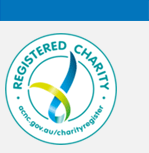Author Credentials
Natalia Tarasova, MD
Usha Asirvatham, RN, MSN
Robin D Goetz, RN, MSN
Mariela Rivera, MD
Juraj Sprung, MD, PhD
Toby N Weingarten, MD
Abstract
Introduction: Assessments of post-operative patients that have been carried out by health care providers before critical opioid-induced respiratory events often do not detect respiratory depression. We hypothesise that opioidinduced respiratory patterns present during sleep may not be properly recognised as providers typically awaken patients for vital sign checks, and awake state assessment is recorded. We used a simulation manikin model to test this hypothesis.
Methods: Nurses who work on a standard post-operative hospital ward volunteered to participate in a study designed to record vital signs on an adult male manikin. None of the nurses had formal critical care or postoperative care unit education. This simulation consisted of an elderly male patient who had undergone a hernia repair and was randomised to have two breathing patterns while asleep – persistent bradypnoea (respiratory rate of six breaths per minute) and intermittent apnoea (respiratory rate of 18 breaths per minute with 30-second pauses); both breathing patterns terminated after nurses woke the patient.
Results: Twenty-seven nurses participated: 14 in the bradypnoea scenario, and 13 in the intermittent apnoea scenario. Upon entering the room, 24 (89%) participants woke the patient to begin respiratory assessment, and three (11%) assessed respirations while the patient remained asleep. Eleven (79%) participants noted abnormal breathing in the bradypnoea scenario, while only one (4%) noted abnormal breathing in the intermittent apnoea scenario.
Conclusion: This simulation model demonstrated that most nurses awaken patients before vital sign assessments, which could prevent detection of respiratory depression present during sleep. Nurses on hospital wards should be educated to follow respiratory status assessment guidelines not to wake the patient for respiratory status assessment.
Recommended Citation
Tarasova, Natalia; Asirvatham, Usha; Goetz, Robin D.; Riveria, Mariela; Sprung, Juraj; and Weingarten, Toby N.
(2024)
"Evaluation of nursing approach to assessment of post-operative respiratory depression using a simulation model,"
Journal of Perioperative Nursing: Vol. 37
:
Iss.
1
, Article 3.
Available at: https://doi.org/10.26550/2209-1092.1289
Clinical scenario and data collection sheet completed by the study participants
2024_37(1)3-PRA3_Evaluation-of-nursing-approach-to-assessment-of-post-operative-respiratory-depression-using-a-simulation-model_Tarasova_audio-files.docx (10216 kB)
Audio files of breathing patterns
Creative Commons License

This work is licensed under a Creative Commons Attribution 4.0 License.
Included in
Anesthesiology Commons, Diagnosis Commons, Medical Education Commons


